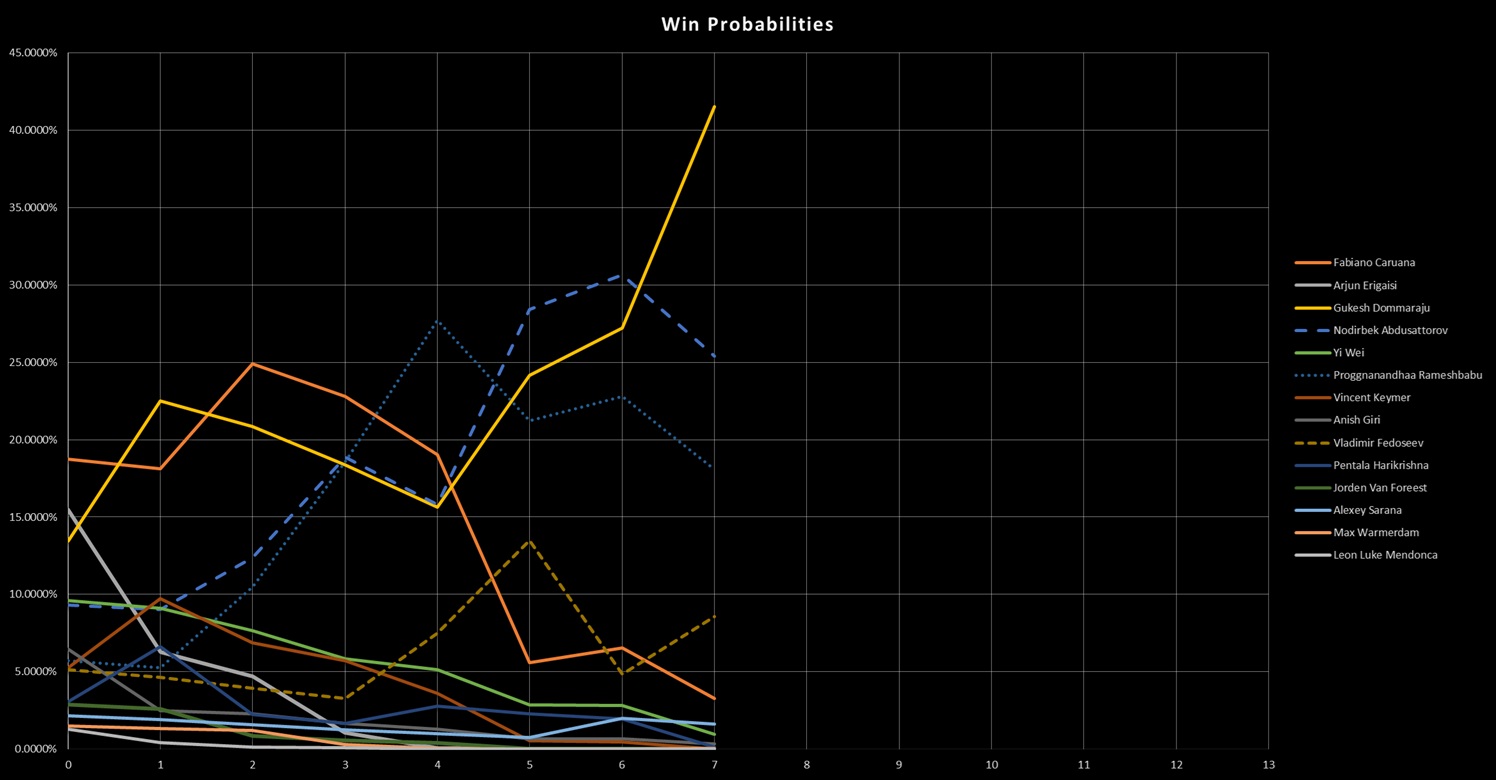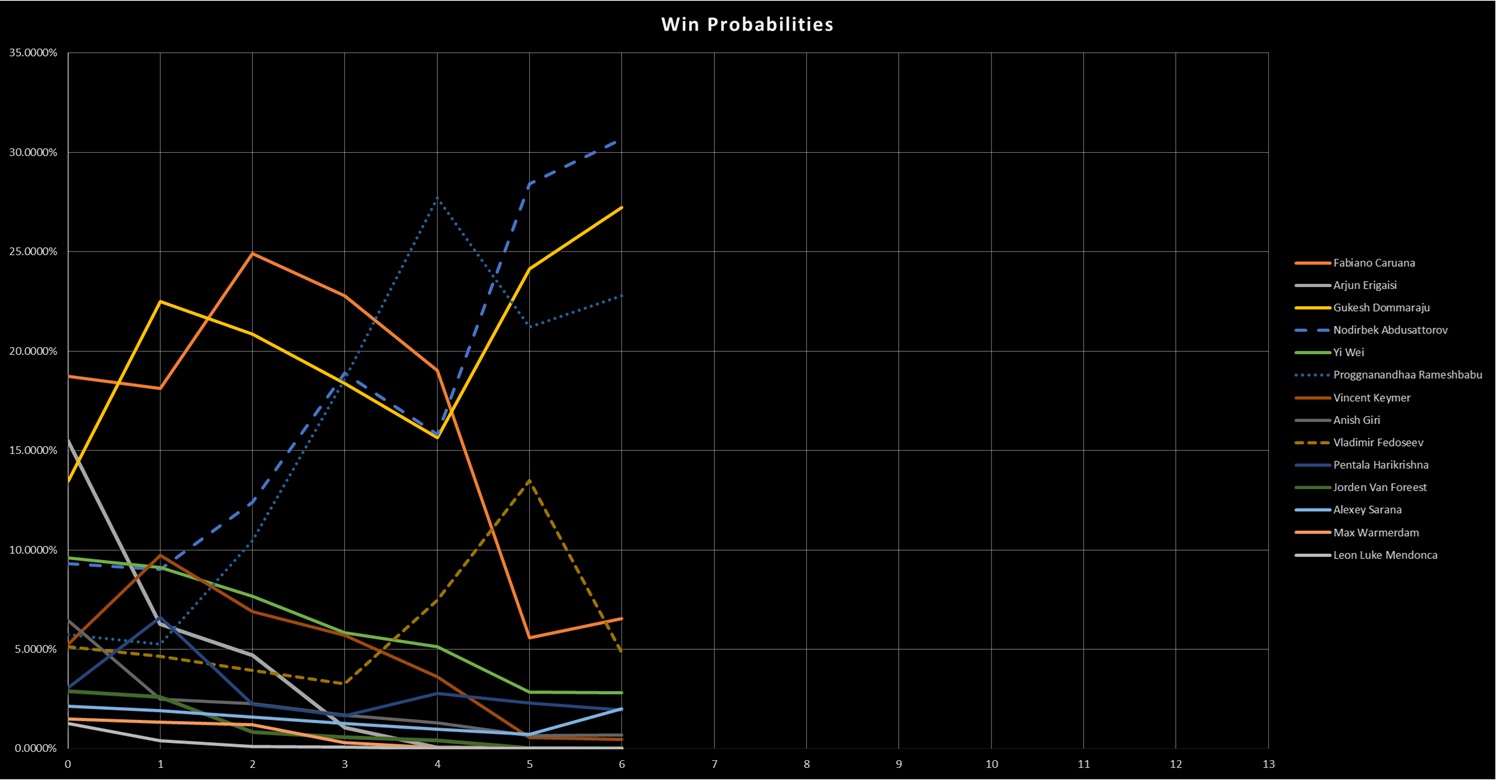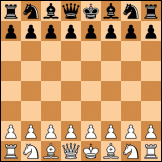I too was surprised by the round 0 predictions. It appears to be related to who gets white against who. I discovered this by accident. The Tata Steel site did not say the order of the players for pairing.
My program uses the Berger Tables for pairing:
Code: Select all
Rd 1: 1-14, 2-13, 3-12, 4-11, 5-10, 6-9, 7-8.
Rd 2: 14-8, 9-7, 10-6, 11-5, 12-4, 13-3, 1-2.
Rd 3: 2-14, 3-1, 4-13, 5-12, 6-11, 7-10, 8-9.
Rd 4: 14-9, 10-8, 11-7, 12-6, 13-5, 1-4, 2-3.
Rd 5: 3-14, 4-2, 5-1, 6-13, 7-12, 8-11, 9-10.
Rd 6: 14-10, 11-9, 12-8, 13-7, 1-6, 2-5, 3-4.
Rd 7: 4-14, 5-3, 6-2, 7-1, 8-13, 9-12, 10-11.
Rd 8: 14-11, 12-10, 13-9, 1-8, 2-7, 3-6, 4-5.
Rd 9: 5-14, 6-4, 7-3, 8-2, 9-1, 10-13, 11-12.
Rd 10: 14-12, 13-11, 1-10, 2-9. 3-8, 4-7, 5-6.
Rd 11: 6-14, 7-5, 8-4, 9-3, 10-2, 11-1, 12-13.
Rd 12: 14-13, 1-12, 2-11, 3-10, 4-9, 5-8, 6-7.
Rd 13: 7-14, 8-6, 9-5, 10-4, 11-3, 12-2, 13-1.
I assigned all the players that got white in round 1 to 1 through 7 and black players to 8-14, not realizing that the second round pairings would not match unless I knew who was really player 1 or 7 etc. It wasn't until the second round was paired that I could reconstruct the player numbers that Tata Steel used. I then reran, round zero and was startled at what a big difference it made. This difference shows clearly how unfair single round robins really are. I suspect when I code the knockout pairings used at CCT, similar weirdness will appear.
Probabilities after round seven are below.

Thank you for pointing out the browser warning. I never configured SSL certificates for that subdomain so you only use http:// not https:// I decided to install a certificate on that subdomain so that it could be accessed via SSL. I then tried again with this post and I now see the image inline. My browser didn't throw a warning about the domain not having SSL support.
As always, I appreciate your input. It appears it is a three-way race with Fedoseev a distant 4th.
Mike.


